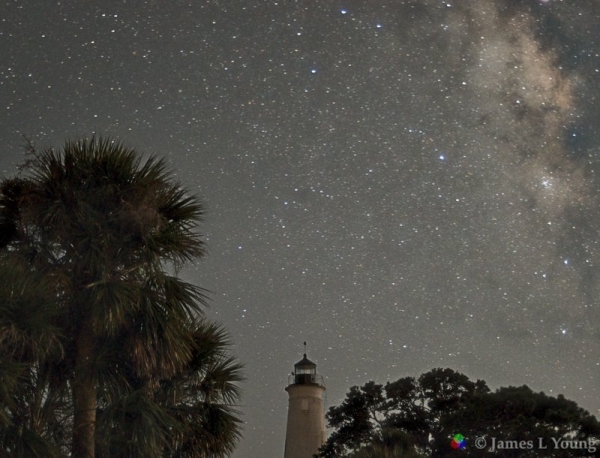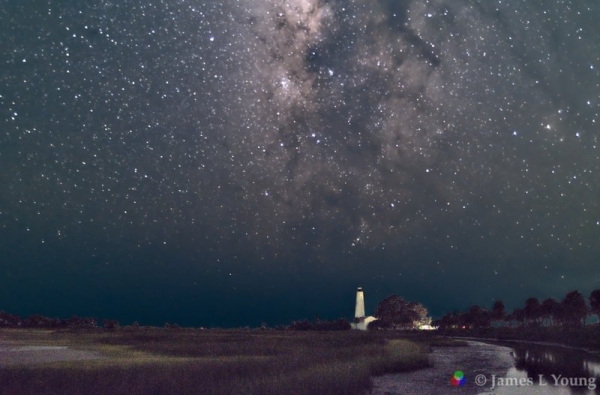Summer in Florida is a great time to take beautiful cloud and storm photographs. It also brings a chance to view our galaxy, the Milky Way, in its full glory.
During Summertime in the U.S the Earth faces directly at the galactic core where the stars are most numerous.
Sadly most places in the United States have too much light pollution to see the Milky Way at all. Even when the Milky Way is visible it appears only as a glowing faint cloud and it doesn’t really look like the galaxy it is.
Most good modern cameras have very high ISO sensor sensitivity and a 10-20 second exposure can reveal the true beauty and splendor of the Milky Way.
Getting a good picture can be quite challenging. In addition to finding a location with a dark sky you should go when there are few clouds and no moon shine. For a few of the images I “painted” the vegetation by turning on a small LED light for a few seconds during the exposure.
Even when you get all the conditions right for a Milky Way photo you will find most of your images will have satellite and high flying airplane tracks. There is no getting away from that form of light pollution.
Using a high ISO setting requires a bit of work in post production to remove the noise and correct the tone curves. If you used too long an exposure you can get small star trails due to the Earth’s rotation which can limit enlargement of the image.
Interestingly when I developed my raw images I found there was an owl sitting atop the lighthouse spire. I can only imagine what the owl, with its incredible night vision, could see of the Refuge and Milky Way.
Updates:
On another trip to the refuge I found two owls atop the lighthouse. This image was taken when there was a slender crescent moon that provided enough light to illuminate the lighthouse.
This next photo is an experiment in image stacking. The technique is described here.







